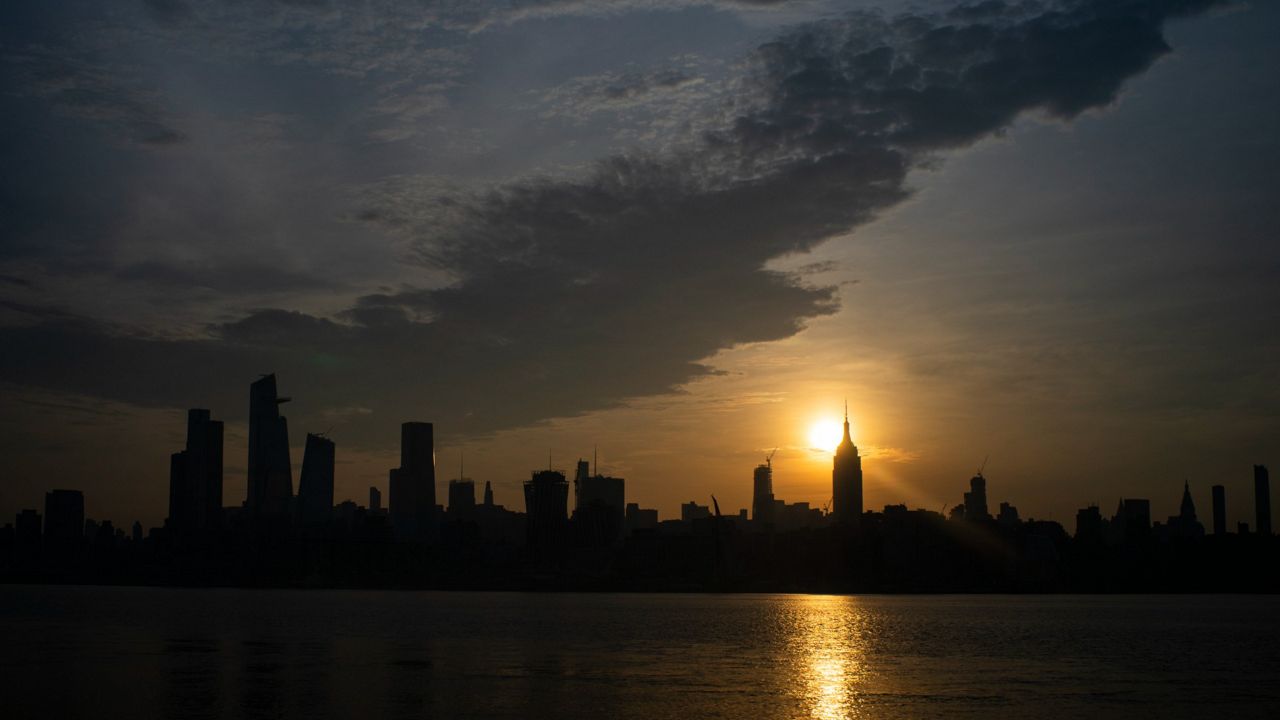A wave of extreme heat gripped New York City for a full week last month, knocking out power across the five boroughs as the heat index hovered around 100.
But as temperatures soared, many residents in boroughs outside Manhattan found themselves without access to nearby cooling centers, according to a report released by New York City Comptroller Brad Lander’s office on Thursday.
An analysis Lander’s office conducted using data pulled from the city's Cooling Center Finder on July 20 — the second day of a heat that lingered through July 25 — found stark disparities in access to the city’s cooling centers based on neighborhood.
What You Need To Know
- As a heat wave gripped New York City last month, many residents in boroughs outside Manhattan found themselves without access to nearby cooling centers, according to a report released by New York City Comptroller Brad Lander’s office
- An analysis Lander’s office conducted using data pulled from the city's Cooling Center Finder on July 20 — the second day of a heat that lingered through July 25
- As of July 20, only two of the city’s 542 cooling centers were open in East Flatbush, which is home to around 162,400 New Yorkers, the report found
As of July 20, only two of the city’s 542 cooling centers were open in East Flatbush, which is home to around 162,400 New Yorkers, according to the report.
Queens as a borough had access to five cooling centers per 100,000 people, compared to 7.1 cooling centers per 100,000 people in Manhattan, the report found.
East Flatbush, Elmhurst and Corona, Kingsbridge Heights and Bedford, Kew Gardens and Woodhaven, Crown Heights and Prospect Heights, Borough Park, Bedford-Stuyvesant, South Crown Heights and Lefferts Gardens, Fordham and University Heights and Highbridge and Concourse were the 10 neighborhoods that had the highest “heat vulnerability” indices that day while having the fewest number of cooling centers per 100,000 people, according to the report.
“The heat vulnerability index estimates heat risk based on social and environmental factors of surface temperature, greenspace, access to home air conditioning and poverty rates,” Lander’s office noted in a release.
Close to 50% of the city’s open cooling centers that day, meanwhile, were senior centers that only serve New Yorkers ages 60 and up, the report found.
Fifty-six percent of those senior centers did not have extended hours, and 22% were not wheelchair accessible, the report went on to say.
The report did note that one outer-borough neighborhood — Brownsville in Brooklyn — had the highest number of cooling centers — 17.3 — per 100,000 people, followed by East Harlem with 13.5 and Midtown Manhattan with 12.6.
In a statement, Lander called on the city to “move immediately to establish additional cooling centers in neighborhoods like East Flatbush, where our analysis shows very high heat vulnerability but far too little access to cooling sites.”
“As climate change makes deadly heat waves more prevalent, New York City must shade its residents from dangerous health effects,” Lander said. “If we take action now, we can prevent future heat emergencies from becoming life-threatening catastrophes.”
NY1 has reached out to the city’s Emergency Management department for comment on the report.
To find a cooling center visit https://maps.nyc.gov/cooling-center/. For other spots to cool off, visit http://on.nyc.gov/2BIpyOU.



